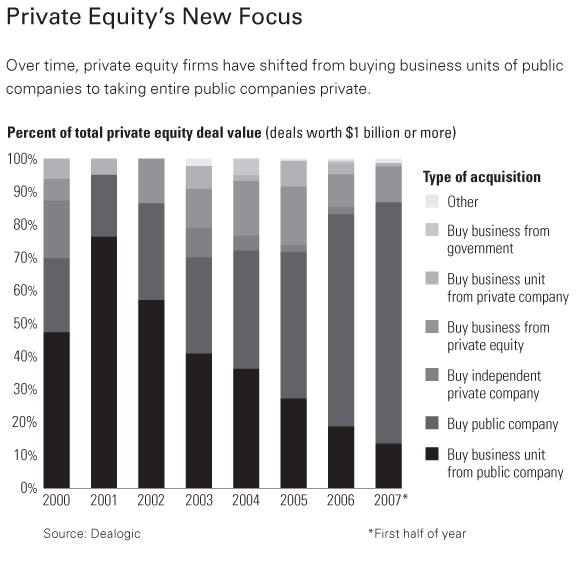
The Strategic Secret of Private Equity
Private equity. The very term continues to evoke admiration, envy, and—in the hearts of many public company CEOs—fear. In recent years, private equity firms have pocketed huge—and controversial—sums, while stalking ever larger acquisition targets. Indeed, the global value of private equity buyouts bigger than $1 billion grew from $28 billion in 2000 to $502 billion in 2006, according to Dealogic, a firm that tracks acquisitions.
Risk Management…the What, Why, and How
Risk Management is the process of identifying, analyzing and responding to risk factors throughout the life of a project and in the best interests of its objectives. Proper risk management implies control of possible future events and is proactive rather than reactive. Proper risk management will reduce not only the likelihood of an event occurring, but also the magnitude of its impact. I was working on the installation of an Interactive Voice Response system into a large telecommunications company.


IN BUSINESS, TACTICS TRUMP STRATEGY
There is a longstanding tradition to draw guidance and principles of business from the game of chess. One of the best examples comes from Gary Kasparov’s book “How Life Imitates Chess.” Kasparov’s book is chock full of insight and makes some great points, however, a majority of the book sticks to one mainstream, oversimplified thought — “strategy is all” in chess and in business.
EUROPEAN PRIVATE EQUITY ACTIVITY
Direct private equity investment funds that primarily focus on
investments in Europe are monitored.
Funds raised are recorded in the country of the advisory team
that is raising/managing the fund (‘industry statistics’).
The funds included in the statistics are: private equity funds
making direct private equity investments, mezzanine private
equity funds, co-investment funds and rescue/turnaround funds.
The following funds are excluded from the statistics:
infrastructure funds, real estate funds, distressed debt funds,
primary funds of funds, secondary funds of funds.


ERM
Risk management is an increasingly important business driver and stakeholders have become much more concerned about risk. Risk may be a driver of strategic decisions, it may be a cause of uncertainty in the organization or it may simply be embedded in the activities of the organization. An enterprise-wide approach to risk management enables an organization to consider the potential impact of all types of risks on all processes, activities, stakeholders, products and services. Implementing a comprehensive approach will result in an organization benefiting from what is often referred to as the ‘upside of risk’.
THE PERFORMANCE OF PRIVATE EQUITY FUNDS

RISK MANAGEMENT FRAMEWORK
Risk Management is an enabling function that adds value to the activities of the organisation and increases the
probability of success in achieving our strategic objectives. It’s about managing uncertainty and creating an
environment where surprises are minimised.
This document defines the practices adopted by the University to identify risk, in order to reduce potential
negative impacts, and improve the likelihood of beneficial outcomes.

